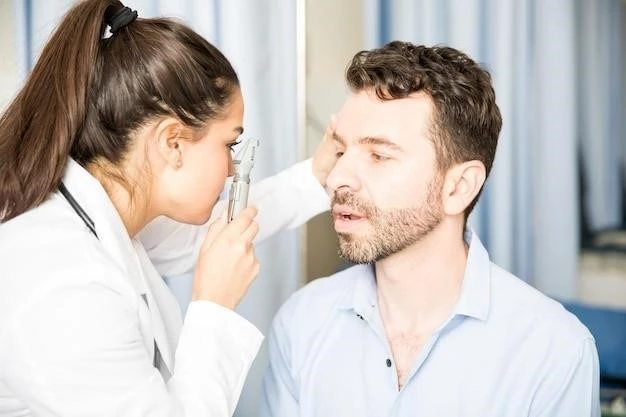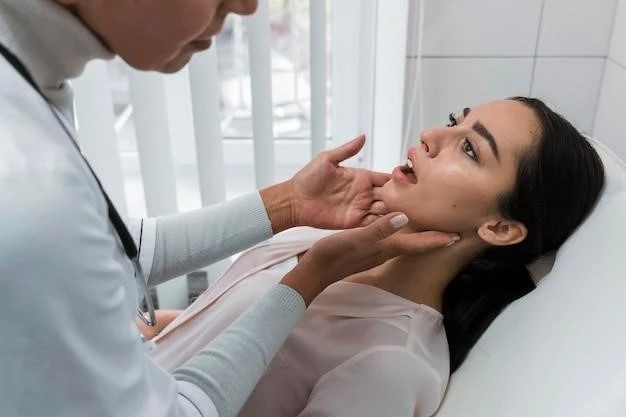Disease ⸺ Hairy Nose Tip
Introduction to Nose Conditions
Nose conditions encompass a wide range of dermatological issues affecting the nasal region․ From benign skin growths to more serious disorders like rhinophyma, nasal skin disorders can impact both the aesthetics and functionality of the nose․ One common benign skin growth seen on the nose is sebaceous hyperplasia, which presents as small, yellowish bumps due to enlarged sebaceous glands․ Skin lesions can also develop on the nose, affecting the overall facial appearance․
Understanding the different nose conditions is crucial for timely diagnosis and appropriate medical treatment․ While some conditions may be minor and primarily aesthetic concerns, others like rhinophyma can significantly impact a person’s quality of life․ The nose serves as a prominent feature of the face, making any abnormalities or skin issues particularly noticeable․
By exploring the causes, symptoms, and treatment options for various nose conditions, individuals can better address any dermatological issues affecting their nasal skin․ Seeking professional guidance for managing these conditions, including the potential need for nose surgery, can help individuals maintain both the health and appearance of their nose․

Understanding Rhinophyma
Rhinophyma is a dermatological condition characterized by the thickening of the skin on the nose, resulting in a bulbous and swollen appearance․ It is a subtype of rosacea, a common chronic skin condition that causes redness and visible blood vessels in the face․
The exact cause of rhinophyma is not fully understood, but it is believed to be linked to factors such as genetics, environmental triggers, and the presence of the skin mite Demodex folliculorum․ The condition is more commonly seen in middle-aged men, although it can affect individuals of any gender․
Individuals with rhinophyma may experience symptoms such as thickened skin, enlarged pores, and a disfigured nasal shape․ The emotional impact of rhinophyma can be significant, as the changes in facial appearance may lead to self-esteem issues and social anxiety․
Treatment options for rhinophyma include medical therapies like topical medications and oral antibiotics to manage inflammation․ In more severe cases, nose surgery may be recommended to reshape the nose and improve its appearance․ The goal of treatment is not only to address the physical symptoms but also to enhance the patient’s overall well-being and quality of life․
Sebaceous Hyperplasia and Skin Lesions
Sebaceous hyperplasia is a common skin condition characterized by the enlargement of sebaceous glands, leading to the formation of small yellowish bumps on the skin, particularly on the face, including the nose․ These benign growths are typically painless but can be cosmetically concerning for individuals․
Skin lesions refer to any abnormal growth or change in the skin’s appearance․ On the nose, skin lesions can manifest in various forms, ranging from moles and warts to cysts and other growths․ These lesions may be caused by sun exposure, genetics, or underlying medical conditions․
Diagnosing sebaceous hyperplasia and skin lesions on the nose often involves a visual examination by a dermatologist․ In some cases, a biopsy may be performed to determine the nature of the growth and rule out any underlying malignancy․
Treatment options for sebaceous hyperplasia and skin lesions on the nose include cryotherapy, laser therapy, and topical medications․ In cases where the lesions are cosmetically bothersome or at risk of becoming cancerous, surgical removal may be recommended․ Early detection and proper management of these skin issues are essential for maintaining healthy nasal skin and overall facial aesthetics․
Enlarged Sebaceous Glands on the Nose
Enlarged sebaceous glands on the nose can contribute to various dermatological issues, including sebaceous hyperplasia and the formation of skin lesions․ Sebaceous glands are responsible for producing sebum, an oily substance that helps keep the skin moisturized․
When sebaceous glands on the nose become enlarged, they can appear as small bumps or papules on the skin’s surface․ These bumps may be yellowish or flesh-colored and can be mistaken for acne․ Enlarged sebaceous glands can affect the texture and appearance of the skin, particularly on the nose․
Factors such as hormonal changes, genetics, and environmental influences may contribute to the enlargement of sebaceous glands․ Proper skincare routines, including gentle cleansing and exfoliation, can help manage the appearance of enlarged sebaceous glands and reduce the risk of developing associated skin conditions․
Seeking guidance from a dermatologist is essential for accurately diagnosing and addressing enlarged sebaceous glands on the nose․ Dermatological interventions such as topical treatments, laser therapy, or surgical procedures may be recommended to improve the appearance of the skin and address any underlying issues related to sebaceous gland enlargement․
Diagnosis and Treatment Options
Diagnosing conditions affecting the nose, such as sebaceous hyperplasia, skin lesions, and rhinophyma, involves a thorough examination by a dermatologist․ Visual inspection, skin analysis, and, in some cases, biopsies may be necessary to determine the exact nature of the nasal skin disorder․
Once a diagnosis is made, treatment options can be tailored to address the specific condition present․ For benign skin growths like sebaceous hyperplasia and skin lesions, treatment may include cryotherapy, topical medications, laser therapy, or surgical removal for more stubborn or cosmetically bothersome lesions․
Managing rhinophyma often involves a combination of medical therapies and surgical interventions․ Oral and topical medications may help control inflammation and reduce the progression of the condition․ In advanced cases, nose surgery, such as laser resurfacing or tissue sculpting, may be recommended to reshape the nose and improve its appearance․
Individuals with nose conditions should work closely with their healthcare provider to develop a personalized treatment plan that addresses their unique needs and concerns․ Regular follow-up appointments and routine skin checks can help monitor the condition’s progress and make any necessary adjustments to the treatment regimen․
Importance of Nose Surgery
Nose surgery, also known as rhinoplasty, plays a crucial role in treating various nose conditions, including rhinophyma, enlarged sebaceous glands, and other skin disorders affecting the nasal region․ Rhinoplasty is a surgical procedure designed to reshape and enhance the appearance of the nose, addressing both aesthetic concerns and functional issues․
For individuals with rhinophyma, nose surgery can help restore a more natural nasal contour by removing excess tissue and reshaping the nose․ The procedure aims to improve the patient’s facial appearance and self-confidence while also addressing any breathing difficulties that may arise due to nasal skin disorder․
In cases of enlarged sebaceous glands or persistent skin lesions on the nose, surgical removal may be necessary to achieve optimal results․ Nose surgery can provide a long-lasting solution for those seeking to address cosmetic imperfections or discomfort caused by benign skin growths․
Choosing a skilled and experienced plastic surgeon or dermatologist is essential for the success of nose surgery․ Patients should undergo a comprehensive evaluation to determine the most suitable surgical approach based on their specific nose condition and treatment goals․
Overall, nose surgery offers a safe and effective treatment option for individuals with nose conditions seeking to improve their facial appearance, restore nasal function, and enhance their quality of life․ Proper pre-operative evaluation, surgical technique, and post-operative care are key factors in achieving successful outcomes for patients undergoing nose surgery․
Recovery and Aftercare
Recovery and aftercare following nose surgery are crucial aspects of the treatment process for individuals with nose conditions such as rhinophyma or enlarged sebaceous glands․ After the surgical procedure, patients can expect a period of healing and adjustment as the nose undergoes changes․
During the initial recovery phase, patients may experience swelling, bruising, and discomfort around the nose area․ Following the post-operative instructions provided by the healthcare provider is essential for minimizing complications and promoting proper healing․
Patients undergoing nose surgery should follow a tailored aftercare plan, which may include keeping the surgical site clean and protected, taking prescribed medications as directed, and attending follow-up appointments to monitor progress and address any concerns;
Engaging in gentle activities and avoiding strenuous exercises during the early stages of recovery can help prevent strain on the healing nasal tissues․ Adhering to dietary recommendations and skincare protocols can also support the healing process and optimize results․
Long-term aftercare for individuals who have undergone nose surgery involves sun protection, maintaining good skincare practices, and attending periodic check-ups with the healthcare provider to assess the nose’s health and aesthetic outcomes․ Open communication with the medical team is key to addressing any post-operative issues promptly and ensuring the best possible recovery․
Conclusion
In conclusion, nose conditions such as rhinophyma, sebaceous hyperplasia, and skin lesions can pose significant challenges to individuals in terms of both aesthetics and functionality․ Understanding the underlying causes, symptoms, and treatment options for these dermatological issues is essential for effective management․
From diagnosis to treatment, patients with nose conditions benefit from the expertise of dermatologists and plastic surgeons who can provide tailored care to address their specific needs․ Whether through medical therapies or surgical interventions like nose surgery, individuals can achieve improvements in their nasal skin health and overall facial appearance․
The importance of proper diagnosis, timely intervention, and comprehensive aftercare cannot be overstated when addressing nose conditions․ By collaborating with healthcare providers and following recommended treatment plans, individuals can navigate the challenges posed by conditions like rhinophyma and enlarged sebaceous glands with confidence․
Ultimately, nose surgery stands out as a vital tool in the treatment arsenal for individuals seeking to address complex nose conditions comprehensively․ By prioritizing the health and aesthetics of the nose, patients can enhance their quality of life and regain self-assurance in their facial appearance․
Advancements in medical and surgical techniques continue to offer new opportunities for individuals with nose conditions to achieve optimal outcomes and long-term satisfaction․ By staying informed, proactive, and engaged in their treatment journey, patients can take proactive steps towards healthier nasal skin and a rejuvenated facial appearance․
